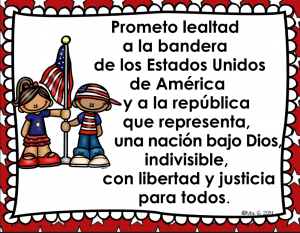Spanish Grade One Curriculum con Señora Oliver
In Grade One, Spanish instruction is designed to generate interest and enthusiasm for the target language through a wide range of communicative and hands-on activities. The teaching of Spanish at the elementary level is content-based and interdisciplinary. First Grade students will learn and use Spanish vocabulary and simple grammar structures while developing communicative skills and acquiring knowledge in Language Arts, Social Studies, Art, and Music.
The class meets 3 times/week for 30 minutes. Typical activities include vocabulary routines (greetings, date, weather, etc), songs and poetry, Total Physical Response activities (TPR engage children in active, physical activities and interactions in the target language, such as in Simon Says), role playing, games, content-based exercises and applications, fiction and nonfiction read aloud, and introduction to Hispanic cultures and traditions.
Expectations
Exposing your young child to a second language optimizes his or her learning potential, and capitalizes on the brain’s capacity for language acquisition in the early years. First and Second grades are crucial years for the acquisition of vocabulary and the development of lifelong foreign language proficiency, communicative skills and cultural awareness.
At the end of first grade students are able to:
State their name
Say the day of the week, months, seasons
Speak about the weather
Know how to introduce themselves and greet others
Count from 1 to 1000
Identify colors and shapes
Identify immediate family members
Identify extensive body parts
Name most animals
Express likes and dislikes regarding food
Recite the Spanish alphabet and know their different sounds
Be able to read beginner level Spanish
Identify major Hispanic Holidays
Know names of Sports in Spanish
Identify directions in Spanish
Recite the pledge of allegiance by memory
Sing a variety of Spanish songs from memory
Understand school vocabulary
Know basic clothing vocabulary









